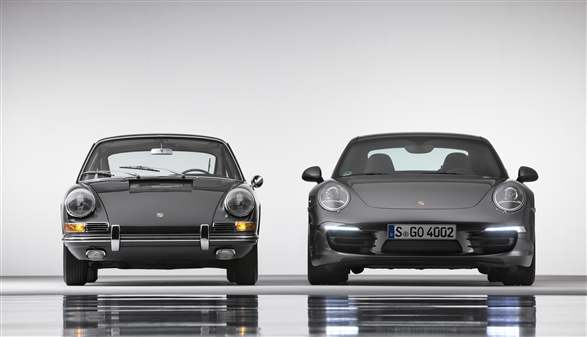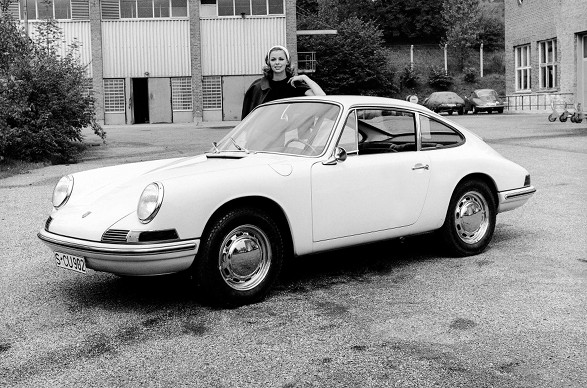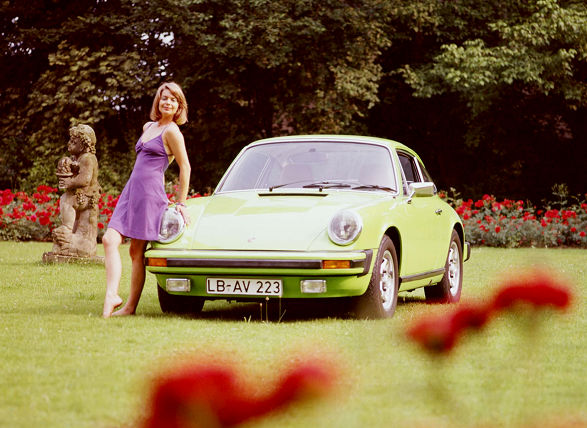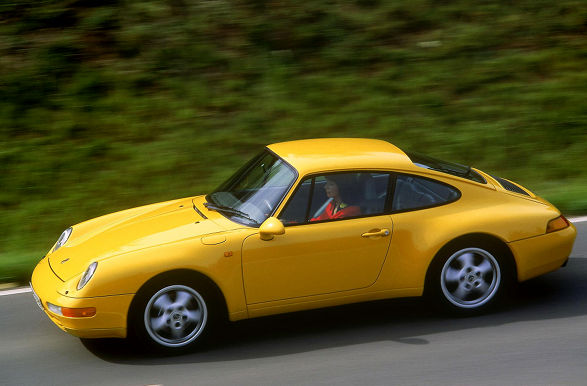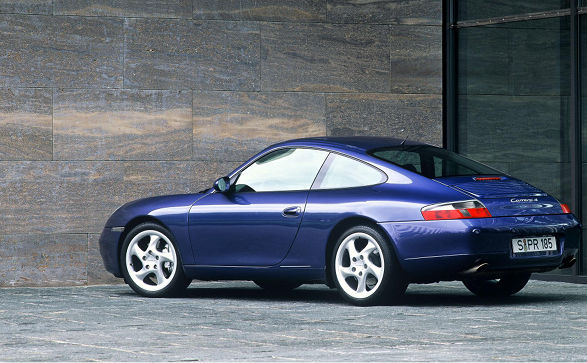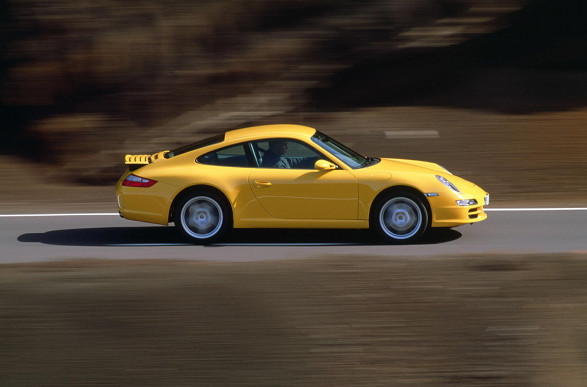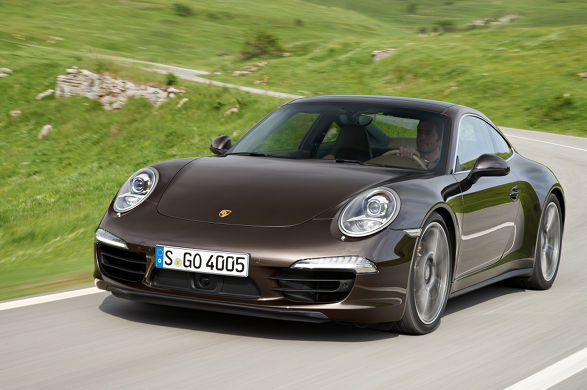The Porsche 911 is fifty years old this year, and to celebrate half a century of Porsche's flagship, we thought we'd take a look back at the evolution of a motoring icon.
Over 820,000 Porsche 911s have found owners worldwide since the car was first unveiled at the IAA International Automotive Show in September 1963, making the 911 the most successful sports car in the world.
But despite its longevity, the basic shape of the 911 has remained virtually unchanged. Porsche may have switched from air to water cooling in the 1990s, but the engine is still IN THE WRONG PLACE, dangling over the rear axle. It is this idiosyncratic engine layout which gives the 911 the, erm, distinctive handling qualities which make it one of the best drivers' cars in the world.
Another part of the 911's success lies in its usability. It would be a monumental pain in the arse to use, say, a Ferrari or a Lambo on a day-to-day basis -- you'd be forever scraping the car's nose on speed bumps and getting stuck in multi-storey car parks -- but you could, and some do, use a 911 as a daily driver with ease.
So, to celebrate the 911's golden anniversary, let's take a look at the car's development.
1963
The Porsche 901 was unveiled at the Frankfurt Motor Show in 1963 as the successor to Porsche 356, but it had been renamed the 911 by the time it went into production. Originally available with a flat-six engine developing 128bhp and a top speed of 131mph, a variety of different models were launched as the '60s progressed. The four-cylinder Porsche 912 came along in 1965 and the 911 Targa was launched in 1967. Porsche increased the size of the car's engine, first to 2.2-litres in 1969 and later to 2.4-litres in 1971. Arguably the most iconic model of this period was the 911 Carrera RS 2.7 of 1972 which, fact fans, was the first production car to feature a rear spoiler.
1973
The second-gen 911 was launched in 1973 and remained in production until 1989. A year later, the Porsche 911 Turbo made its debut and in 1977, a 3.3-litre version of the turbo appeared with 296bhp. In 1982, the 911 became available as a cabriolet for the first time and in 1983 the 911 Carrera 3.2 was revealed which, with its 3.2-litre 228bhp engine, became the definitive '80s sports car.
1988
The 964 911 was launched in 1988 and was the first major revision of the car in fifteen years. Although it looked similar to its predecessor, it featured 85 per cent new components and a tweaked 3.6-litre engine with 247bhp. The 964 also marked the introduction of all-wheel drive to the 911 range with the Carrera 4 model.
1993
The 993 model of 1993 was the first 911 with a newly-designed aluminium chassis and it featured a number of styling changes over its predecessor. The 993 Turbo was also the first 911 Turbo to feature twin-turbochargers. The 993, however, is most notable for being the last 911 with an air-cooled engine.
1997
The 996, which was produced from 1997 to 2005, is perhaps the most important turning point in the history of the 911. It was an entirely new car, with a water-cooled engine, distinctive new headlights and a brand new cockpit. The 996 GT2 of 2000 was also the first car to come with ceramic brakes as standard.
2004
In 2004, Porsche unveiled the next-generation 997 version of the 911. Gone were the 993's Boxster-style headlights and in their place were a new set of oval units which were reminiscent of those fitted to the original 911. The car produced 321bhp in standard 3.6-litre Carrera mode, while the Carrera S was fitted with a 3.8-litre engine which developed 350bhp. The 997 Turbo of 2006 was also the first petrol-engined production car to feature a turbocharger with variable turbine geometry.
More different versions of the 997 were produced than any previous 911, with Carrera, Targa Cabriolet, Turbo, GTS, GT2, GT3 and four-wheel drive models all going on sale.
2011
The current 911, the 991, features a longer wheelbase, wider track and larger tyres than the 997; however, its engines are smaller. The standard Carrera now gets just a 3.4-litre engine, while the Carrera S has to make do with a 3.6. But despite this, the new model produces more power than its predecessor and offers better fuel consumption.
Click here to sign up for our monthly newsletter
Popular news stories
 |
 |
 |
 |
|||
|
|
||||||


